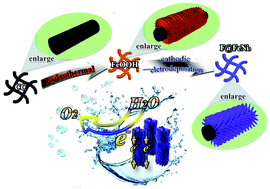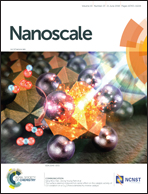Engineering a stereo-film of FeNi3 nanosheet-covered FeOOH arrays for efficient oxygen evolution†
Abstract
Electrochemical oxygen evolution reaction (OER) can be accelerated by employing transition-metal-based catalysts to obtain the desired activity and durability. Considering the promoting effect of the electrode structure on catalyzing OER, a stereo-film on carbon cloth comprising FeNi3 nanosheet-covered FeOOH (F@FeNi3-CC) was engineered by the hydrothermal reaction and subsequent synchronous electrodeposition of Fe and Ni ions. In F@FeNi3-CC, the FeOOH array not only provides the Fe source of FeNi3 nanosheets during the cathodic electrodeposition, but also functions as the support for the ultrathin FeNi3 nanosheets. Such a stereo-film with good electrolyte-permeability also offers expedited electrolyte/reactant transmission paths. The tailored FeNi3 nanosheet offers abundant exposed catalytic sites by virtue of the in situ derived hydroxide layer during anodic oxidation and also acts as the current collector to accelerate charge transport. The F@FeNi3-CC electrode yields outstanding catalytic activity towards OER in alkaline media, particularly at low potential of 1.50 V and large current density of 100 mA cm−2, accompanied with the excellent long-term stability. These results are significant for the construction of stereo-film electrodes for various engineering applications.



 Please wait while we load your content...
Please wait while we load your content...